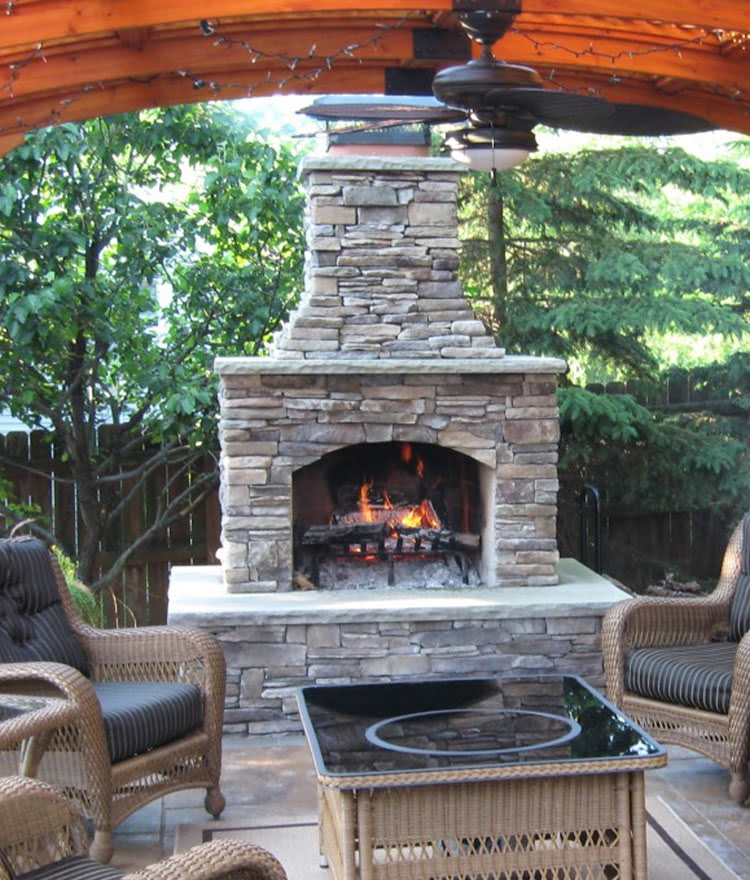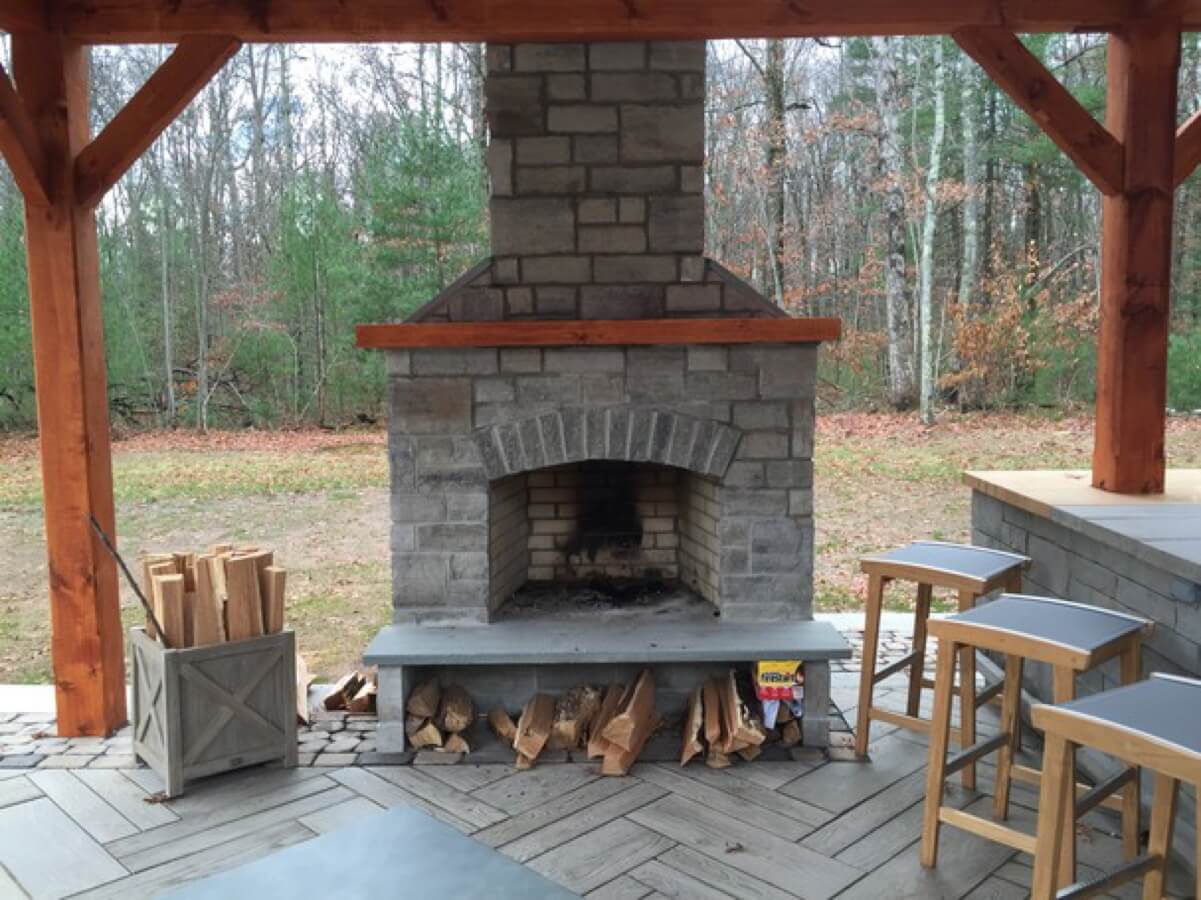An outdoor corner fireplace can transform your backyard into a welcoming retreat, perfect for cool evenings and social gatherings. These space-saving kits offer a practical solution for smaller patios while providing the warmth and ambiance of a traditional fireplace. With various styles and materials available, from rustic stone to modern steel designs, you can find an option that complements your outdoor living space. Below, we explore six key aspects of outdoor corner fireplace kits to help you choose, install, and enjoy your new focal point.
Choosing the Right Style for Your Space
Outdoor corner fireplace kits come in diverse designs to match different architectural styles. Stone veneer kits create a classic, permanent look that blends with natural surroundings, while pre-cast concrete options offer durability with less maintenance. For contemporary spaces, metal fireplaces with clean lines provide a sleek, modern aesthetic. Consider how the fireplace will coordinate with existing patio furniture and landscaping for a cohesive outdoor design.
The size of your fireplace should balance functionality with available space. Compact units work well for intimate seating areas, while larger models make a dramatic statement in spacious yards. Pay attention to height as well—taller fireplaces radiate heat more effectively but may overwhelm small patios. Many kits offer modular components, allowing customization to fit your specific corner dimensions and heating needs.
Material choice affects both appearance and performance. Natural stone retains heat well but requires professional installation in most cases. Lightweight faux stone kits simplify DIY projects while maintaining a realistic look. Steel and aluminum options resist weathering but may need protective coatings in humid climates. Think about long-term maintenance when selecting materials to ensure your fireplace stays beautiful with reasonable upkeep.
Understanding Fuel Options and Efficiency
Most corner fireplace kits accommodate multiple fuel types, each with distinct advantages. Wood-burning models create authentic crackling flames and intense heat but require proper ventilation and regular ash cleanup. Gas-powered units offer convenient ignition and adjustable flames without the mess of wood, though they need professional gas line installation. Ethanol fireplaces provide clean-burning alternatives where traditional fuels aren’t practical.
Consider how often you’ll use the fireplace when choosing fuel. Frequent entertainers might prefer gas for its instant control, while occasional users may enjoy the ritual of building wood fires. Check local regulations regarding outdoor burning—some areas restrict wood fires or require specific clearances from structures. Gas and ethanol options often face fewer restrictions in urban settings.
Efficiency varies significantly between fuel types. Wood fires generate the most heat but lose much of it through the chimney. Gas models convert more energy directly to warmth, with some including blowers to distribute heat. Ethanol produces less heat but creates ambiance without utility connections. If supplemental heating is your primary goal, look for kits with heat-reflective panels or optional heat exchanger systems.

Installation Considerations and Requirements
Proper installation ensures safety and optimizes your fireplace’s performance. Most kits include detailed instructions, but site preparation often requires additional planning. Check your local building codes for required permits, especially for permanent structures. The foundation must be level and non-combustible—concrete pads or fire-rated pavers work best for supporting the fireplace’s weight.
Ventilation needs differ by fuel type. Wood-burning units require chimneys that extend above nearby rooflines for proper draft. Gas fireplaces need adequate airflow around burners but may use shorter vent pipes. Some ethanol models are vent-free, offering flexible placement options. Always maintain recommended clearances from walls, overhangs, and flammable materials as specified in the manufacturer’s guidelines.
DIY installation works well for simpler kits with pre-fabricated components, while complex masonry designs may need professional help. Gather necessary tools beforehand—typical requirements include masonry trowels, levels, and appropriate adhesives or mortars. If connecting to gas lines, licensed technicians should handle all plumbing work. Proper installation prevents future issues and ensures years of safe enjoyment.
Enhancing Functionality with Design Features
Many fireplace kits include practical additions that improve usability. Built-in log storage keeps firewood dry and accessible in wood-burning models. Some designs incorporate side tables or counters for setting drinks and snacks, making the fireplace a true outdoor entertainment hub. Look for kits with spark screens or glass doors to contain embers while allowing full view of the flames.
Customization options let you personalize the fireplace’s look and function. Decorative mantels or hearth extensions create visual interest while providing practical surfaces. Some manufacturers offer color choices for metal components or various stone finishes to match your home’s exterior. Consider adding lighting around the fireplace for evening ambiance and improved safety when moving around the fire.
For year-round use, weather-resistant covers protect the fireplace when not in use. In colder climates, heat-resistant glass wind barriers help maintain comfortable temperatures around the seating area. These thoughtful additions maximize your investment by extending usability and reducing maintenance requirements throughout the seasons.
Maintenance Tips for Longevity
Regular upkeep preserves your fireplace’s appearance and performance. For wood-burning units, remove ashes after each use once completely cooled to prevent buildup. Annual chimney inspections check for creosote accumulation that could lead to dangerous chimney fires. Gas fireplaces need occasional burner cleaning to ensure proper flame patterns and efficient operation.
Exterior surfaces require different care depending on materials. Natural stone benefits from occasional sealing to prevent moisture absorption and staining. Metal components may need touch-up paint or protective wax coatings to prevent rust. Always follow manufacturer recommendations for cleaning products—harsh chemicals can damage some finishes. Cover the fireplace during extended periods of non-use to shield it from weather damage.
Inspect all components at season changes. Look for cracks in masonry, loose fittings, or signs of wear on protective screens. Address minor issues promptly to avoid costly repairs later. Proper maintenance not only extends your fireplace’s life but also ensures safe operation every time you light a fire.
Creating the Perfect Ambiance Around Your Fireplace
Thoughtful landscaping completes your outdoor fireplace area. Arrange seating in a semi-circle facing the corner to encourage conversation while keeping everyone within the fireplace’s warmth. Choose weather-resistant furniture with cushions that complement the fireplace’s materials for a coordinated look. Add side tables within easy reach for maximum comfort during gatherings.
Soft lighting enhances the fireplace’s glow without overwhelming the flames. Solar-powered path lights guide guests safely, while string lights overhead create festive atmosphere. Incorporate natural elements like potted plants or stone borders to blend the fireplace seamlessly with your garden design. A small water feature nearby adds soothing sounds that complement the crackling fire.
Extend usability into cooler months with practical accessories. Keep blankets in a nearby storage bench for chilly evenings. Install hooks for hanging lanterns or cooking tools if you plan to use the fireplace for grilling. With the right finishing touches, your corner fireplace becomes the heart of outdoor living, perfect for everything from quiet relaxation to lively parties.
Final Thoughts on Outdoor Corner Fireplaces
A well-chosen corner fireplace kit adds both function and beauty to your outdoor space. By considering your needs for style, fuel type, and maintenance upfront, you’ll select a model that delivers lasting satisfaction. Proper installation and care ensure safe operation while preserving the fireplace’s attractive appearance.
Whether you prefer the rustic charm of stacked stone or the contemporary appeal of sleek metal, today’s kits offer solutions for every taste and budget. The compact corner design makes these fireplaces particularly versatile for patios of all sizes. With thoughtful accessories and landscaping, your fireplace area will become a favorite spot for making memories.
Investing in an outdoor corner fireplace creates more than just a heat source—it establishes a natural gathering place that enhances your home’s livability. As you enjoy cozy flames under the stars, you’ll appreciate how this single addition elevates your entire outdoor experience.
DIY Outdoor Fireplace Kit “Fremont” makes hardscaping cheap and easy!
outdoor fireplace kits Your DIY Outdoor Fireplace Headquarters
Outdoor Fireplaces – All 4 Seasons Professional Chimney Services
Corner outdoor fireplace Outdoor fireplace plans, Outdoor
Outdoor Fireplace Kits, Masonry Fireplace, Stone Fireplace
Related Posts:









